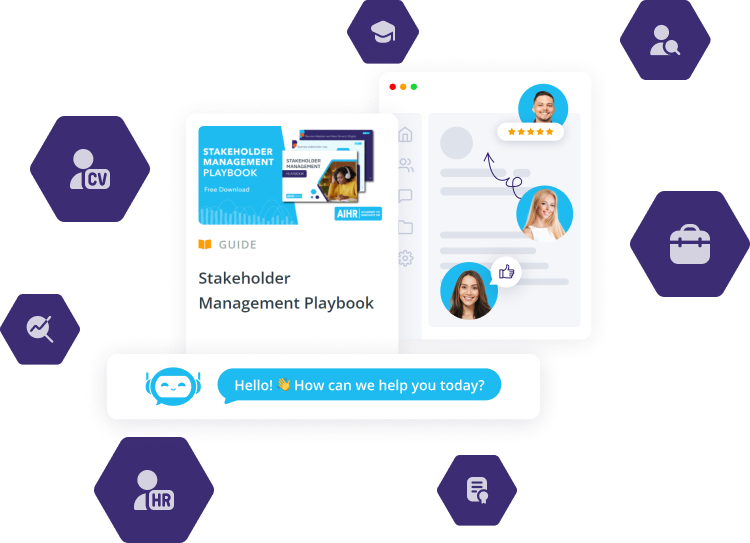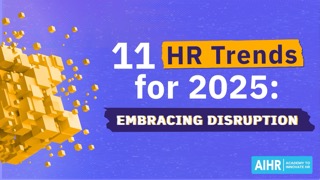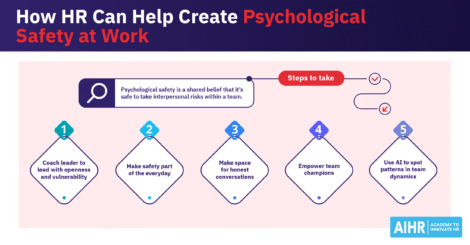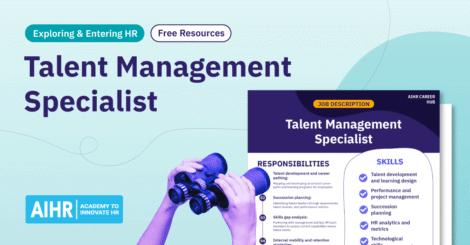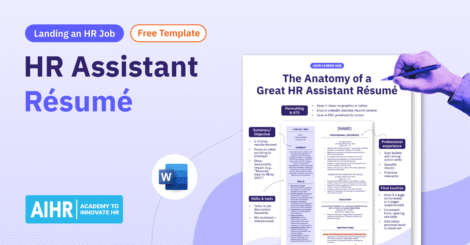While talent attraction and retention can be challenging, employee development strategies can help. In fact, companies that invest in such strategies are twice as likely to retain their employees and experience an 11% rise in profitability.
HR drives employee potential by offering growth opportunities to create a future-ready workforce. With the right strategies, development doesn’t have to be complicated—just intentional. This article discusses what employee development is, HR’s role in it, and effective strategies to help you drive employee development at your organization.
Contents
What is employee development?
Why employee development matters
15 employee development strategies for HR
How to develop an employee development plan
What is employee development?
Employee development is the ongoing process of helping employees improve their skills, gain knowledge, and advance in their careers. This includes formal training, mentorship, coaching, and cross-functional projects to help employees gain the skills needed for current and future roles.
Both employees and employers are responsible for talent development. Employees must take ownership of their careers, while employers provide resources and time. Additionally, development isn’t a one-size-fits-all process, so flexibility and personalization are key.
HR’s role in employee development
HR’s role in employee development goes beyond hosting or facilitating training. HR identifies skill gaps, develops and tailors development programs, and helps create roadmaps for employee growth.
HR also helps leaders sync employee development with business goals. When done well, staff development becomes part of the organization’s culture, not just an annual employee training budget item.
Why employee development matters
Employee development influences many layers of a business. Here’s why it matters:
- Improved retention: Employees who have growth opportunities will see a future with your company as less likely to resign. This improves retention and saves your company money when constantly hiring new employees.
- Greater engagement: Growth opportunities can increase employee motivation. Put yourself in their shoes — are you more engaged when enhancing your skills and knowing your employer is investing in your development?
- Future-proof workforce: Employee development is a great way to prepare your workforce for change. It gives them the ability to adapt to change, automation, and other new and emerging advancements in their industry.
- Stronger culture: Employee development can help create a culture where growth is not just expected but also supported. It can significantly enhance your employer brand, which can help attract and retain top talent.
- Better performance: Highly trained employees tend to make better decisions and be more efficient. This supports positive business outcomes, as it can positively impact the organization’s reputation and bottom line.
- Leadership pipeline: You won’t be scrambling to find suitable people to fill leadership roles when they open up, since you’ll already have a qualified in-house pool of talent you’ve developed in advance.
- Increase in innovation: Employees who have access to comprehensive professional development are more likely to think creatively, allowing them to contribute more to process improvements.
“Developing your employees isn’t just a perk and shouldn’t be treated like lip service — it’s a signal to your employees that they matter and have a future at your company. When employees feel that, they show up differently.”

15 employee development strategies for HR
Without specific plans or action steps, your employee development strategies won’t go anywhere. Here are 15 strategies to support your organization’s employee development efforts, each with practical implementation ideas and tips for HR.
1. Implement Individual Development Plans (IDPs)
IDPs are personalized action plans created by employees and managers to set career goals and identify the skills or training needed to achieve them. The purpose is to support career growth and align development with organizational goals.
Example actions for HR
- Develop customizable templates for managers and employees
- Sync IDPs with performance reviews to maintain momentum
- Schedule regular check-ins to revisit and revise plans.
2. Offer mentorship programs
Mentorship programs pair less experienced employees with seasoned professionals who provide guidance, support, and knowledge-sharing. This can help mentees grow and adapt more easily within the company.
Example actions for HR
- Identify high-potential employees and match them with senior leaders and managers
- Create a formal mentorship program and pilot test it, so you can make necessary changes before scaling it up
- Train mentors on how to guide their mentees effectively.
3. Provide access to online learning platforms
These are digital tools that offer courses and training materials employees can access anytime. They help improve job-related skills, promote self-directed learning, and make development more scalable.
Example actions for HR
- Offer subscriptions to platforms like Coursera or Skillsoft
- Create internal “learning playlists” based on job role or function
- Integrate learning completions into employee recognition systems.
4. Encourage job rotations and cross-departmental training
These programs allow employees to work in different roles or departments temporarily. They aim to broaden skills, increase collaboration, and build a better understanding of how the business operates.
Example actions for HR
- Identify critical roles that benefit from cross-training
- Assign rotational opportunities to high-potential employees
- Use short-term project teams as a low-risk introduction to other functions.
5. Enroll employees in leadership development programs
Leadership development programs focus mostly on preparing employees for management or leadership roles. They help employees build decision-making, strategic thinking, and people management skills.
Example actions for HR
- Segment programs by career level (e.g., emerging leaders, managers, and executives)
- Include 360-degree feedback, coaching, and capstone projects
- Offer opportunities for employees to lead projects or teams to help build their leadership skills gradually.
6. Focus on soft skills development
This targets non-technical skills like communication, teamwork, and emotional intelligence. The goal is to improve how employees interact and work together, which boosts collaboration and performance.
Example actions for HR
- Offer communication workshops or emotional intelligence training
- Incorporate soft skills into performance metrics
- Use role-playing scenarios in team meetings.
7. Support tuition reimbursement for continuing education
Tuition reimbursement for continuing education involves funding or reimbursing employees for external courses or degrees related to their job. It encourages lifelong learning and helps build more qualified teams.
Example actions for HR
- Establish a clear application process and approval criteria
- Highlight the success stories of employees who’ve benefited from this initiative
- Offer flexible schedules to accommodate class commitments.
Learn to create successful employee development strategies
Develop your skills in facilitating successful employee development strategies that will increase retention and set your organization and its workforce up for long-term success.
AIHR’s Talent Management and Succession Planning Certificate Program teaches you how to determine talent supply needs, create a strategic talent management framework, and identify, develop, and engage potential leaders.
8. Launch internal knowledge sharing sessions
These are company-led sessions where employees share expertise, best practices, or project insights. These sessions can promote learning, break down silos, and build a culture of collaboration across the company.
Example actions for HR
- Start a ‘lunch-and-learn’ (or ‘brown bag’) series on relevant topics
- Offer presenters recognition with small perks or internal spotlights
- Record sessions and build a searchable video library to benefit all employees.
9. Provide stretch assignments
Stretch assignments are challenging tasks that go beyond an employee’s usual duties and responsibilities. They’re designed to push employees to grow, develop new skills, and prepare for higher responsibility.
Example actions for HR
- Encourage managers to identify stretch opportunities in their teams
- Offer mentoring support to aid in each stretch assignment
- Celebrate risk-taking and learning by recognizing employees’ efforts in these assignments, even if the results aren’t perfect.
10. Offer coaching programs
Coaching involves one-on-one guidance focused on performance improvement and goal achievement. It’s often more short-term and performance-based than mentoring, although there may be some overlap.
Example actions for HR
- Offer external coaching for leadership development, or to help underperformers
- Train internal managers to be developmental coaches, so employees have support from managers with whom they already have a working relationship with
- Set clear outcomes and timelines for coaching engagements, and track progress with regular check-ins.
11. Promote volunteer opportunities
Your company can provide time or resources for employees to volunteer. This supports employees’ personal growth, builds soft skills, and strengthens employer branding and community engagement.
Example actions for HR
- Partner with nonprofit organizations for strategic volunteering opportunities
- Encourage team volunteering as both a bonding and a learning experience
- Track and acknowledge employee participation.
12. Use performance reviews to drive development conversations
These regular evaluations, where managers give employees feedback, identify strengths and weaknesses, and help them set goals. As such, they provide the perfect opportunity to discuss employee development in detail.
Example actions for HR
- Redesign performance review templates to include career goals and training needs
- Train managers to ask future-focused questions
- Provide relevant resources to help employees reach their career goals.
13. Invest in microlearning
Microlearning delivers training in short, focused segments, using formats like videos or quizzes. It’s designed to enable quick learning and retention, which makes it ideal for busy employees with little time to spare.
Example actions for HR
- Use platforms like Loom or your company’s intranet to create short ‘how-to’ videos or quick skill refreshers.
- Embed microlearning into daily workflows using Slack messages or mobile apps
- Include microlearning modules in onboarding to reinforce key concepts.
14. Build community groups
Community groups are employee-led interest or identity-based groups (e.g., women in tech or STEM, or sustainability clubs). These groups facilitate networking, inclusion, knowledge sharing, and peer learning.
Example actions for HR
- Host monthly roundtables based on different roles (e.g., a People Ops peer exchange)
- Rotate group leads to rotate each quarter to challenge them and facilitate broader, more varied learning
- Use Slack or Teams channels to allow group members to keep conversations going digitally.
15. Recognize and reward development efforts
These acknowledge and reward employee achievements. They boost motivation, reinforce desired behaviors, and help retain top talent.
Example actions for HR
- Offer prizes, certificates, or public shout-outs to employees when they complete their training
- Create a quarterly Growth Champion recognition program
- Tie learning outcomes to promotion readiness to further motivate employees.
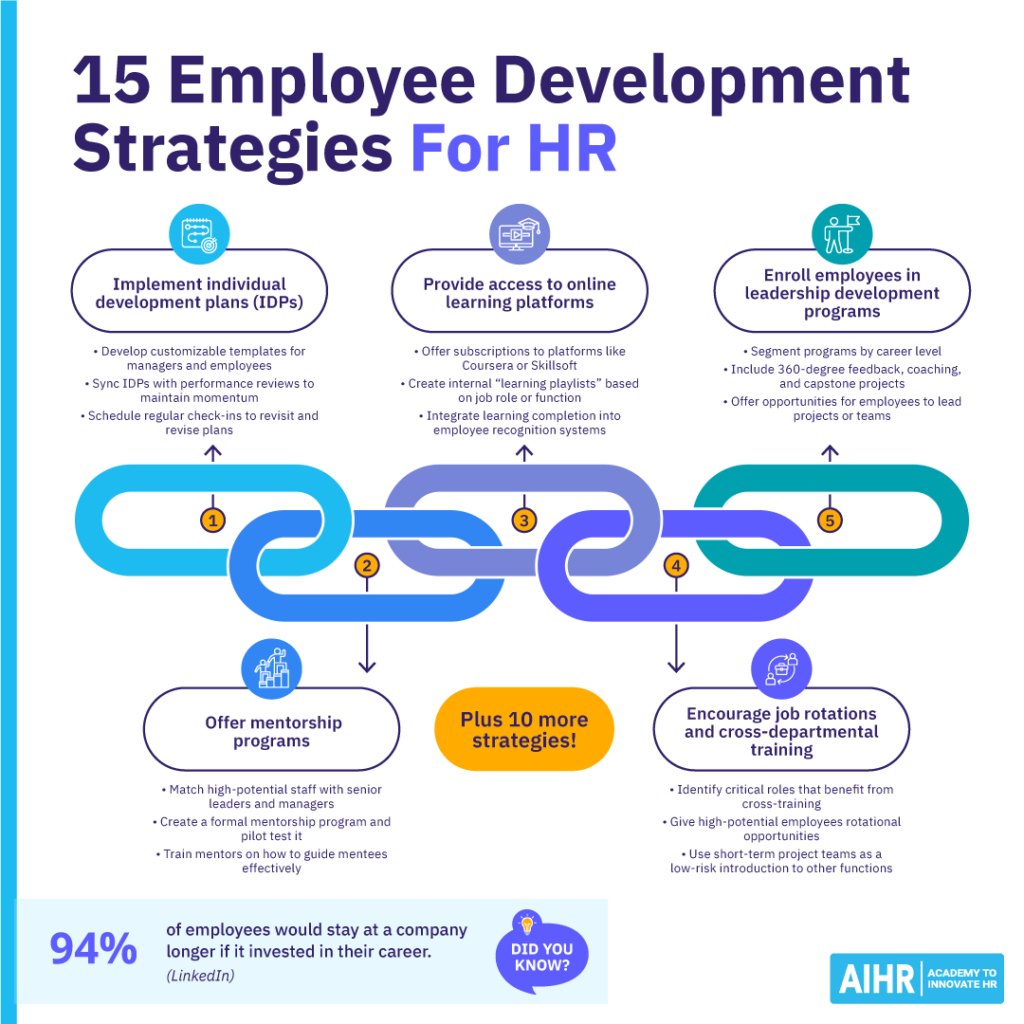
How to develop an employee development plan
Now that you’ve gone over strategies for employee development, it’s time to help develop an employee development plan. Creating an effective plan doesn’t have to be overwhelming. Here’s a quick guide:
Understand business needs
Look at where your business is heading in the next one to five years, and identify what skills are essential to get there. For example, if your organization is planning a digital transformation, upskilling in data analysis, digital tools, or AI may be key.
Talk to leadership teams to understand growth plans, market trends, and future challenges. This ensures you’re not training people just for the sake of it, but building capabilities your business actually needs.
Assess employee goals and skills gaps
Once you know what the business needs, find out where your people stand. This means identifying both their career goals and their current skills gaps. You can do this through employee surveys, self-assessments, performance reviews, or one-on-one conversations.
The goal is to uncover what skills employees want to develop, what employees goals are in line with business needs, and making development more meaningful and effective.
Define your development offerings
After assessing skills needs, decide how you’ll help employees build those skills. Use a mix of learning methods, such as formal learning (e.g., courses), informal learning (e.g., mentorship), and experiential learning (e.g., stretch assignments).
This gives employees the flexibility to learn in different ways, while making development opportunities practical and tied to real-world work. Be clear on what’s available and who qualifies for what, so staff can navigate the options easily.
Implement with intention
Roll out your development plan gradually to see what works and what doesn’t. Start with a small group or pilot program, and gather feedback from both employees and managers on whether they found the sessions helpful or if there were technical or scheduling challenges.
Use this input to adjust your plan before implementing it company-wide. Remember that implementation isn’t just about launching programs — it’s about building a culture that values continuous learning and improvement.
Measure and evolve
Track participation in employee training, completion, and impact. Look at metrics like feedback scores, enrollment rates, and attendance rates. You should also measure actual outcomes — are internal promotions increasing? Are team performance or retention rates improving?
Use these insights to refine your development efforts over time. A strong plan should evolve with both workforce and business needs, staying relevant as the company grows and changes.
To sum up
Employee development isn’t a one-off task but a long-term strategy that helps grow talent, boost engagement, and strengthen your internal talent and succession pipeline. HR plays a key role by aligning development with business goals, offering practical learning opportunities, and tracking impact to ensure progress.
To reduce turnover and build a future-ready workforce, start small and scale up what works best. Focus on intentional, flexible programs that meet both employee and business needs. With the right plan, you won’t just train people — you’ll keep them.


